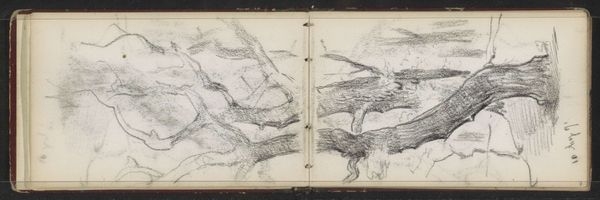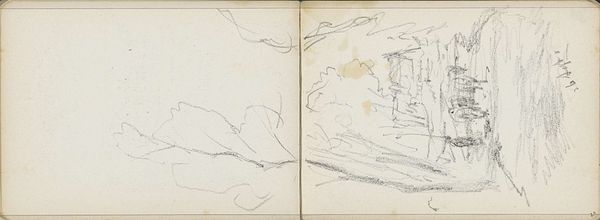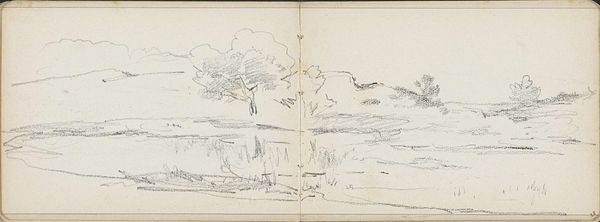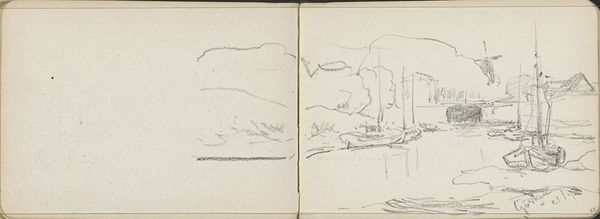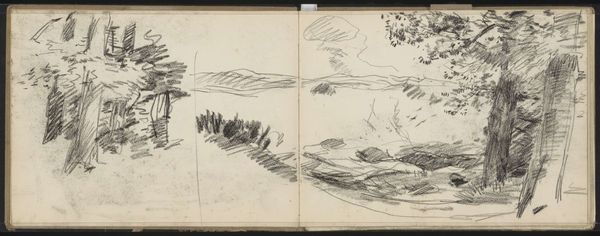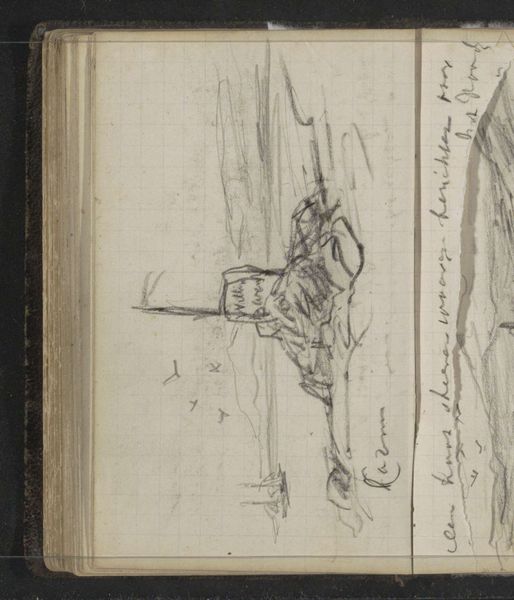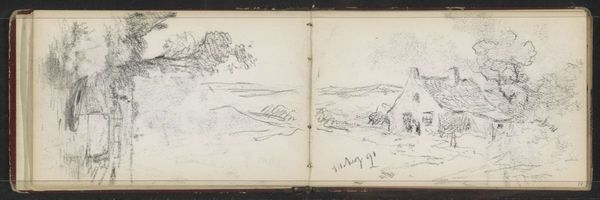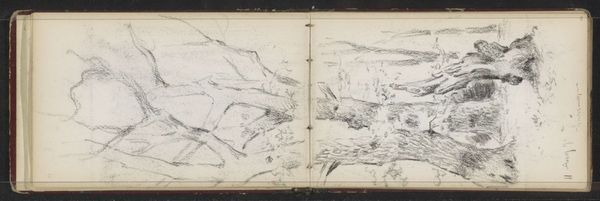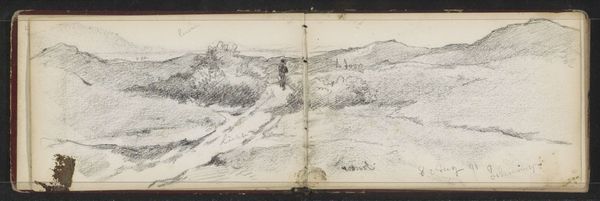
drawing, pencil
#
drawing
#
landscape
#
pencil
#
genre-painting
#
realism
Dimensions: height 101 mm, width 157 mm
Copyright: Rijks Museum: Open Domain
Willem Cornelis Rip made this pencil drawing, Studieblad met korenschoven, landarbeiders en een boerderij, at an unknown date. Looking at this sketch, one can’t help but wonder about the role of agricultural labor in late 19th and early 20th century Netherlands. The image depicts rural life, showing workers amidst the harvest and farm buildings. The focus on labor and rural settings reflects a broader interest in the realities of working-class life, a theme that emerged strongly in European art during this period. The late 19th century was a time of significant social change. The rise of industrialization led to increased attention to the lives of those who worked the land. Rip’s sketch gives us a glimpse into the cultural values and economic activities of his time. To fully understand this work, one can research Dutch agricultural practices and the socio-economic conditions of rural workers during this period. Such research would help us understand the social structures that shaped artistic production in the Netherlands.
Comments
No comments
Be the first to comment and join the conversation on the ultimate creative platform.
